
The Role of Persian Carpets in Films
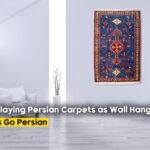
The Art of Displaying Persian Carpets as Wall Hangings
When it comes to Oriental rugs, Persian carpets often stand out for their exceptional craftsmanship and intricate designs. However, the world of Oriental rugs is vast and includes carpets from various regions such as Turkey, India, Afghanistan, and China. Each of these regions has its unique styles, techniques, and traditions. For buyers seeking to invest in an Oriental rug, understanding the differences between Persian carpets and other Oriental rugs is crucial. This guide will help you compare the key characteristics of Persian carpets with those from other rug-making regions, making it easier for you to choose the perfect piece for your home.
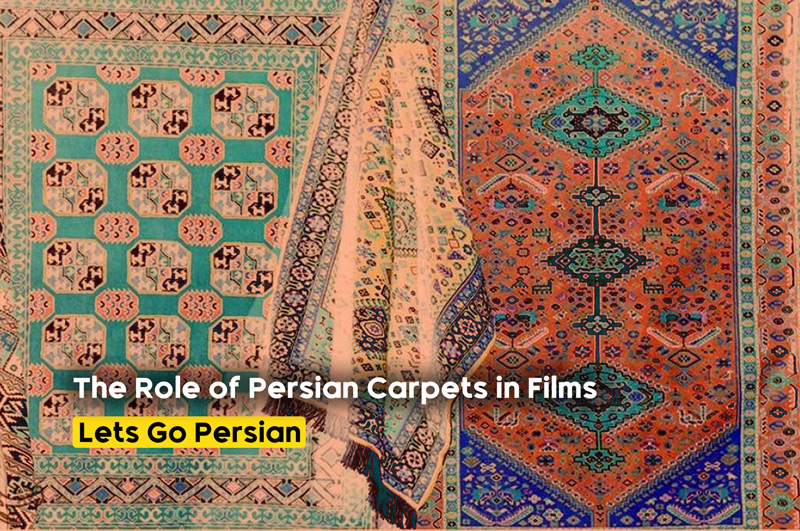
Comparing Persian Carpets with Other Oriental Rugs
1. Persian Carpets: A Benchmark of Excellence
Craftsmanship and Technique
Persian carpets are considered some of the finest and most intricate in the world. They are handwoven using the Persian knot (also known as the Senneh knot), which allows for a higher knot density and more detailed designs. Persian carpets are known for their curvilinear patterns, delicate floral motifs, and central medallion designs.
- Knot Type: Persian knot (asymmetrical)
- Knot Density: Typically high, with many fine carpets reaching over 200 KPSI (knots per square inch)
- Designs: Floral, medallions, garden themes, and geometric designs in tribal carpets
- Notable Regions: Isfahan, Tabriz, Kashan, Nain, Qom, Heriz, Qashqai (tribal)
Materials and Dyes
Persian carpets are often made from high-quality wool, silk, or a blend of both. The wool is typically sourced from local sheep, known for its softness and durability. Silk Persian carpets are especially luxurious and are prized for their fine knotting and intricate patterns.
- Materials: Wool, silk, and cotton foundations
- Dyes: Traditional Persian carpets use natural dyes, derived from plants, minerals, and insects. These dyes age gracefully and give the carpet a timeless beauty.
Signature Styles
- Tabriz: Known for bold, complex medallions and detailed hunting scenes.
- Isfahan: Renowned for high knot density and intricate floral designs.
- Heriz: Features geometric patterns and strong, angular designs, often in warm, earthy tones.
- Qashqai (Tribal): Recognized for bold geometric designs and vibrant colors, with nomadic influences.

Qashqai Carpets
2. Turkish Rugs: Bold Geometric Patterns and Durability
Craftsmanship and Technique
Turkish rugs, also known as Anatolian rugs, are famous for their Turkish knot (symmetrical knot), which creates a more durable and tightly woven structure. Turkish rugs often have bold geometric patterns and are less focused on curvilinear or floral designs compared to Persian carpets. Turkish rug designs often reflect tribal motifs and are more rustic in appearance.
- Knot Type: Turkish knot (symmetrical)
- Knot Density: Medium to high, with tribal rugs typically having lower KPSI than urban carpets
- Designs: Geometric, tribal patterns, and more straightforward floral designs
- Notable Regions: Hereke, Oushak, Kars, Kilim, Bergama
Materials and Dyes
Turkish rugs are traditionally made from wool or cotton, with some higher-end examples incorporating silk. The wool used in Turkish rugs is known for its strength and durability, making these rugs particularly well-suited for high-traffic areas.
- Materials: Wool, cotton, and silk (in luxury carpets like Hereke)
- Dyes: Both natural and synthetic dyes are used, though traditional Turkish rugs often employ natural dyes for rich, lasting colors.
Signature Styles
- Hereke: Known for silk rugs with intricate designs and fine knotting, similar to Persian silk carpets but featuring more symmetrical patterns.
- Oushak: Characterized by soft, faded colors and large, bold geometric patterns. These rugs are often lighter in color, with pastel shades.
- Kilim: Flat-woven rugs with no pile, featuring bold geometric designs. Kilims are lightweight and often used as wall hangings or throw rugs.
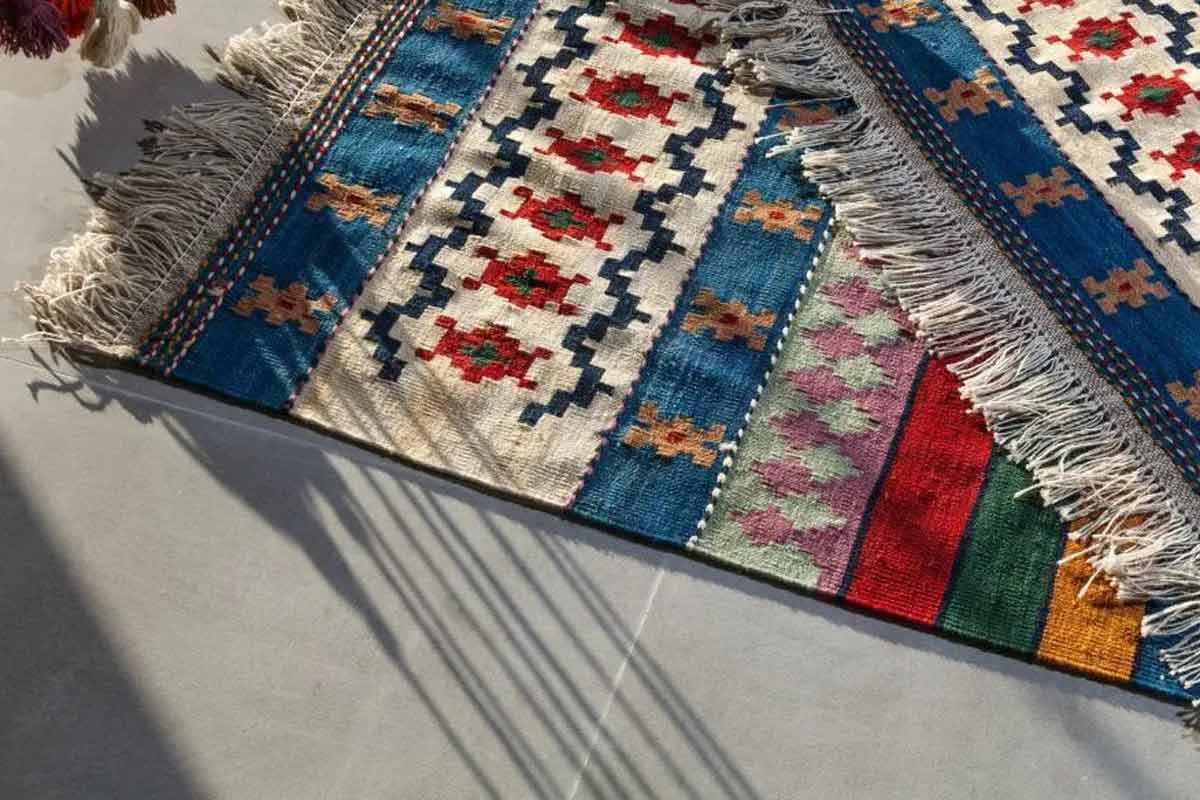
Persian Kilim
3. Indian Rugs: Artistic Versatility and Contemporary Appeal
Craftsmanship and Technique
Indian rugs are known for their versatility, offering both traditional and contemporary designs. They are often inspired by Persian carpets but with a local twist. Indian weavers tend to use both the Persian knot and the Turkish knot, depending on the design. Indian rugs can vary in style, from intricate floral patterns to bold, modern designs.
- Knot Type: Both Persian and Turkish knots
- Knot Density: Varies from low to high, depending on the style
- Designs: Persian-inspired floral designs, geometric patterns, and modern interpretations
- Notable Regions: Agra, Jaipur, Kashmir
Materials and Dyes
Indian rugs are typically made from wool or silk, and the quality of the materials can vary widely. Kashmir silk rugs are among the finest produced in India, known for their intricate designs and vibrant colors. Indian rugs often use a mix of natural and synthetic dyes, especially for contemporary pieces.
- Materials: Wool, silk, and cotton foundations
- Dyes: Both natural and synthetic dyes are used, with a focus on vibrant, eye-catching colors
Signature Styles
- Agra Rugs: Known for Persian-inspired designs with large floral patterns and medallions. Agra rugs are often made with a high knot density and rich colors.
- Jaipur Rugs: Known for both traditional and modern designs, Jaipur rugs offer a range of styles, from Persian floral motifs to bold, contemporary patterns.
- Kashmir Silk Rugs: These luxurious rugs are made from fine silk and feature detailed, curvilinear designs. They are similar to Persian silk carpets but often incorporate Indian elements.
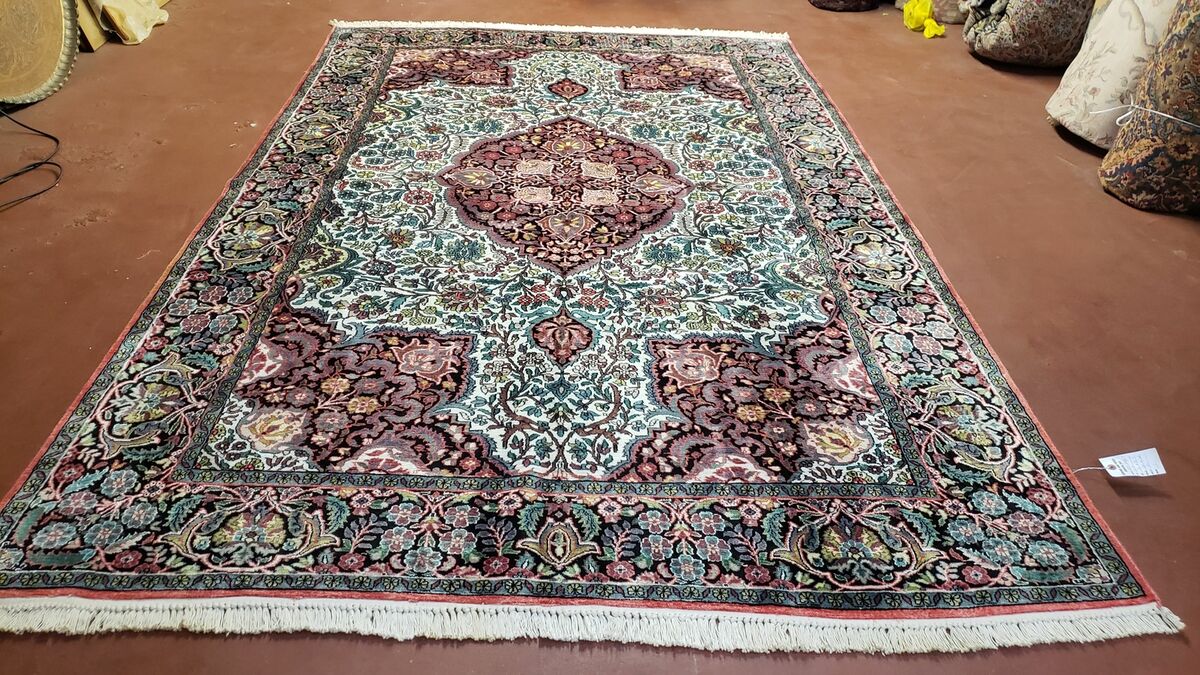
Kashmir Silk Rugs
4. Afghan Rugs: Tribal Craftsmanship and Bold Designs
Craftsmanship and Technique
Afghan rugs are highly regarded for their tribal craftsmanship, often featuring bold, geometric designs and deep, earthy colors. The most famous type of Afghan rug is the Khal Mohammadi, which is known for its deep red and black color palette. Afghan weavers use both the Turkish knot and the Persian knot, depending on the tribe or region.
- Knot Type: Both Persian and Turkish knots
- Knot Density: Generally lower than Persian carpets, with a more rustic, tribal aesthetic
- Designs: Geometric, tribal patterns, often in darker, earthy tones
- Notable Regions: Khal Mohammadi, Baluchi, Turkoman
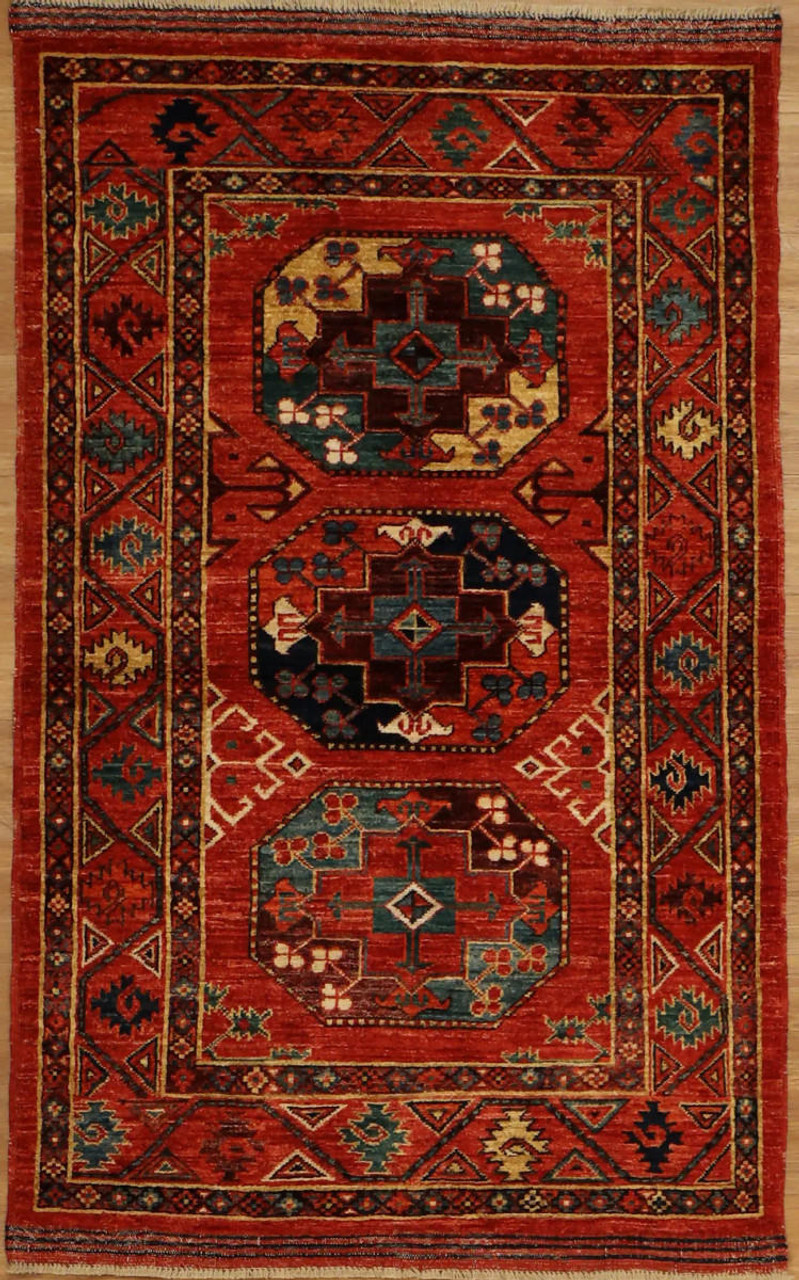
Afghan Rugs
Materials and Dyes
Afghan rugs are made primarily from wool, often hand-spun and dyed using natural dyes. These rugs are known for their rich, deep hues, particularly reds, browns, and blacks.
- Materials: Wool, with cotton, occasionally used for the warp and weft
- Dyes: Natural dyes are commonly used, giving Afghan rugs their distinctive deep, earthy colors
Signature Styles
- Khal Mohammadi: Known for its deep red and black color scheme, this type of rug features bold, geometric patterns with a tribal aesthetic.
- Baluchi Rugs: Smaller, tribal rugs with intricate geometric patterns, often used as prayer rugs. They typically feature darker tones, including blues, reds, and blacks.
- Turkoman Rugs: Often recognized by their repeating gul (flower) patterns, these rugs are woven by Turkoman tribes and are highly prized for their durability.
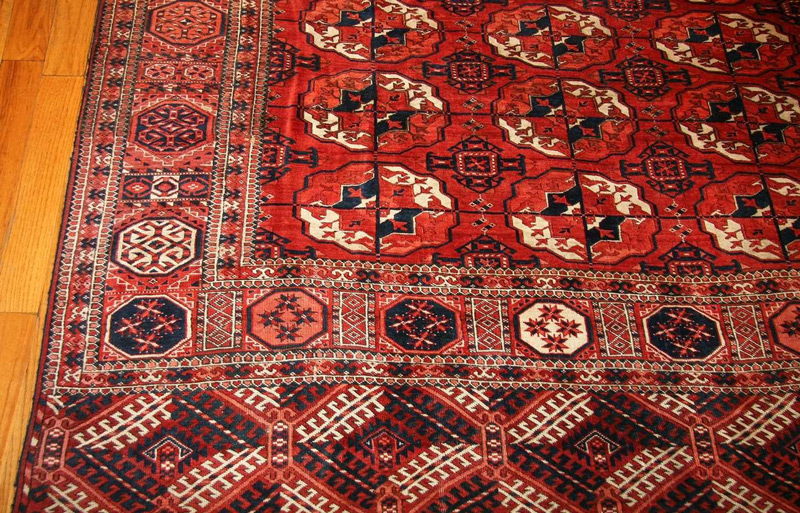
Turkoman Rugs
5. Chinese Rugs: Elegant Simplicity and Symbolism
Craftsmanship and Technique
Chinese rugs are known for their elegant simplicity and symbolic designs, often featuring motifs from Chinese mythology, nature, and Buddhism. Chinese rugs are typically woven with the Persian knot, but their designs are distinct from other Oriental rugs due to their symbolic meanings and more minimalistic approach.
- Knot Type: Persian knot (asymmetrical)
- Knot Density: Varies, with a focus on medium to high knot density
- Designs: Symbolic designs featuring dragons, phoenixes, floral patterns, and Buddhist motifs
- Notable Regions: Peking, Ningxia, Tientsin
Materials and Dyes
Chinese rugs are made from wool, silk, or a combination of both. Silk rugs from China are especially valued for their delicate, shimmering appearance and intricate designs. The dyes used in Chinese rugs are typically natural, and they favor softer, pastel colors such as blues, yellows, and creams.
- Materials: Wool and silk
- Dyes: Predominantly natural dyes, often in softer, muted tones
Signature Styles
- Peking Rugs: Characterized by large floral motifs, medallions, and often symbolic designs such as dragons or phoenixes. Peking rugs typically have a minimalistic yet elegant aesthetic.
- Ningxia Rugs: Known for their Buddhist motifs and muted color palettes, Ningxia rugs are often used in religious or meditative settings.
- Tientsin Rugs: Often more geometric, these rugs feature a blend of traditional Chinese and modern influences, with bold patterns and subdued colors.
6. Comparing Key Features of Persian and Other Oriental Rugs
| Feature | Persian Carpets | Turkish Rugs | Indian Rugs | Afghan Rugs | Chinese Rugs |
| Knot Type | Persian Knot (Asymmetrical) | Turkish Knot (Symmetrical) | Persian & Turkish Knots | Both Persian & Turkish Knots | Persian Knot (Asymmetrical) |
| Designs | Floral, Medallions, Tribal | Bold Geometric, Tribal | Floral, Modern, Geometric | Geometric, Tribal | Symbolic, Minimalistic |
| Knot Density | High (200+ KPSI) | Medium to High | Varies (Low to High) | Medium to Low | Medium to High |
| Materials | Wool, Silk, Cotton | Wool, Silk, Cotton | Wool, Silk, Cotton | Wool | Wool, Silk |
| Dyes | Natural Dyes | Natural & Synthetic | Natural & Synthetic | Natural Dyes | Natural Dyes |
| Notable Regions | Isfahan, Tabriz, Kashan | Hereke, Oushak, Kilim | Agra, Jaipur, Kashmir | Khal Mohammadi, Baluchi | Peking, Ningxia, Tientsin |
Conclusion
When comparing Persian carpets to other Oriental rugs, it’s clear that each type has its distinct style, craftsmanship, and cultural significance. Persian carpets are celebrated for their intricate designs, high knot density, and exceptional quality, while Turkish, Indian, Afghan, and Chinese rugs each offer unique characteristics that reflect their regional heritage. By understanding the differences in materials, techniques, and designs, you can make an informed decision when choosing the perfect Oriental rug for your home. Whether you prefer the luxury of a Persian silk carpet or the tribal boldness of an Afghan rug, there’s an Oriental rug to suit every taste and style.



















